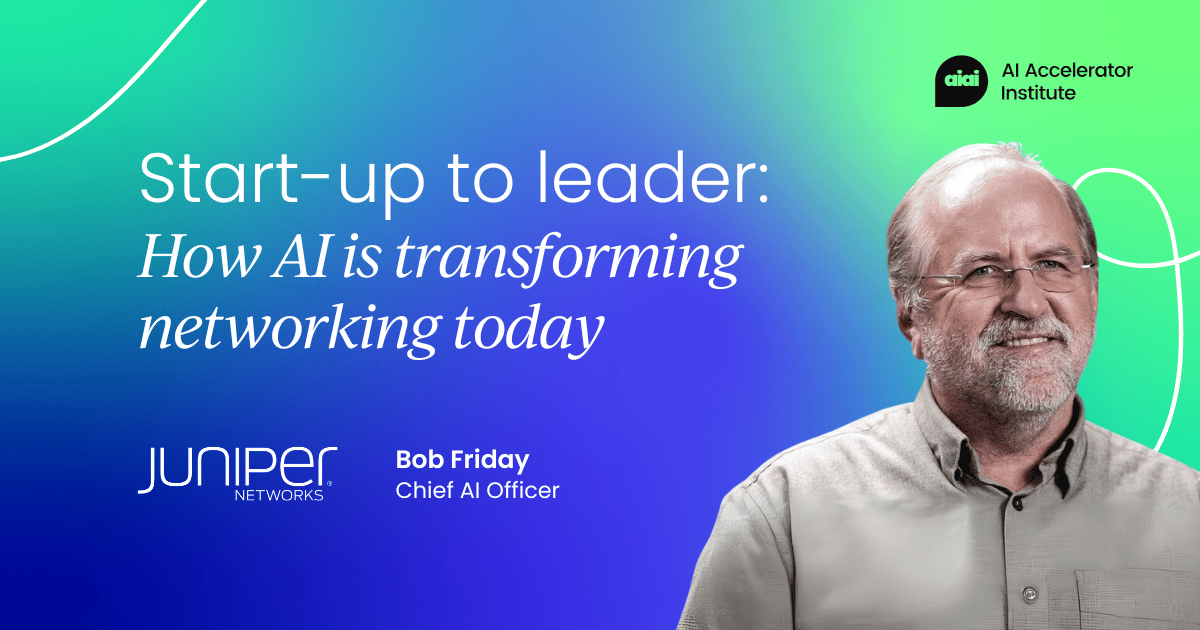Digital transformation encompasses so much more than updating the company's IT system; it is a shift in the entire organisational strategy. In practice, it means leveraging technology for the creation of new business processes, customer interactions, and the entire organisational culture to adapt to changing market conditions.
Successful digital transformation, as McKinsey puts it, is “the fundamental rewiring of how an organisation operates” with the purpose of technology being systematically employed to enhance customer satisfaction while reducing operational costs.
In essence, digital transformation is not a one-time project, but a continuous journey. Indeed, in transformed companies, recent studies indicate nearly 90% claim to have started a digital journey, and the more advanced companies consider it to be a matter for discussion with the Chief Executive Officer.
This shift is also supported by a study that claims investment capital aimed towards digital transformation soared to 1.6 trillion in 2022 and is expected to reach over 3.4 trillion in 2026.
Digital transformation spans across the entire enterprise, from customer-facing processes to the factory floor, and its scope keeps on expanding. Digital transformation is all-encompassing. It combines data, processes, people, and cultures in order to create new value.
As one industry guide emphasises, a transformation roadmap should be “guided by business outcomes, not technology.” An organisation with a clear, business-focused digital strategy will outperform those treating it as a series of IT solutions.
A large MIT Sloan Management Review/Deloitte study found that over 80% of digitally mature firms had a clear digital strategy, while only 15% of early-stage companies did. Primarily, mature organisations view digital initiatives as business-transforming.
Evolution: From automation to intelligent platforms
Digital transformation undergoes evolving eras. In the pre-Internet epoch, during the mid-20th century, digital transformation began with automating processes such as mainframes.
With the emergence of microchips and semiconductors, businesses started digitally converting manual data. In the post-internet era spanning from the 1990s to the 2000s, global connectivity was introduced alongside enterprise software, which digitised workflows, gave rise to e-commerce and CRM systems, and more.
The 2010s mobile and cloud boom, alongside big data, changed the game yet again – businesses began applying advanced analytics to improve data-driven decisions while creating new digital channels. Today, we find ourselves in the AI and Generative AI era.

The possibilities of advanced machine learning, intelligent automation, and advanced automation reshaping industries are endless. Clear breakthroughs, such as ChatGPT in late ’22, have “drive[n] even more change in the way we work, interact, and live”.
This new wave of generative AI is pushing businesses to rethink how they approach product development, content creation, and service delivery. From using AI tools to assist in design workflows to building self-service digital interfaces with human-like interactivity, companies are exploring ways to embed intelligence directly into the customer experience.
Every phase teaches us the same core lessons: digital transformations cannot be considered a project; rather, these are continuous processes requiring never-ending, perennial refinements.
Digital transformation as a new strategic business initiative
A critical one is recent research that came out of MIT, which states that strategy fuels success, not technology. In a case study, MIT Sloan and Deloitte concluded that companies need “a clear and coherent digital strategy” when transforming digitally.
This suggests that C-suite executives need to be the ones initiating digital changes and taking the lead on changes. Many mature companies have dedicated roles or positions, like a “Chief Digital Officer” or “Chief AI Officer,” who report directly to the CEO. In contrast, companies that take an IT-dominated approach led by the CIO to digitally transform the company get stuck halfway.
Analysts emphasise that digital initiatives must stem from business goals, such as driving real change. For example, a white paper by PTC explained that digital transformation “(DX) is, in and of itself, a broad business strategy” and should serve concrete business objectives, including but not limited to: operational efficiency, revenue maximisation or expansion into new markets, product introduction or innovation - rather than a tech for tech's sake approach.
As seen many times before, successful business transformation requires that there also be a shift in the company’s culture. According to Gartner and other experts, the culture of the organisation has to embrace accepting risks and being able to be innovative, otherwise any DX initiatives are bound to fail. It’s not just up to IT. For digital transformation to succeed, people across all departments need to adapt and collaborate in new ways.
To promote change, corporate leaders in high-performing firms strengthen reskilling efforts and invest in building a culture embracing change. Evidence shows that the digitally mature companies are far more likely to achieve positive business outcomes from DX. Furthermore, employees prefer working for forward-thinking businesses.
Organisational issues related to transformation
Despite all the potential, digital transformation is rarely easy. Companies face a number of common challenges along the way. These five factors tend to hold on to development the most:
Integration difficulty and legacy systems
Some established organisations still rely on legacy, decade-old information technology infrastructure, like ERP systems, proprietary databases, on-premises equipment, specialised hardware, etc., to run their businesses.
These legacy systems are difficult to integrate with new cloud solutions and AI applications due to their older architectural designs. Companies, rather informally saying that ‘legacy systems were not designed for AI,’ best explain the existence of data fragmentation.
IT teams have a huge problem integrating everything due to the need to ‘wrap’ older applications, and build APIs and middleware to create links. Integration projects are often expensive as well as time-intensive, causing significant delays to measurable digital transformation progress.
Cultural obstacles
Human considerations are usually the greatest obstacle. Organisational change is rarely welcomed right away — it naturally brings some resistance. Research conducted on large companies reveals the absence of a clearly defined purpose, lack of executive sponsorship, rigid attitudes, and a “no fail” policy often get in еру way of digitisation.
In one study, active disengagement due to change and organisational inertia were cited as some of the most important obstacles. Addressing culture requires active communication — including a clear and convincing explanation of why change is happening and how it affects people, forming multifunctional teams, and setting targets consistent with DX, such as paying bonuses based on digital achievements.
These strategies emphasise culture change from both the bottom up and top down as organisational leaders actively promote transformation while participants are involved in employee-driven initiatives.
Data quality and maturity
The Use of Analytics, AI, and ML algorithms, as well as real-time decision making, requires a DX that uses data. Unfortunately, many companies are not yet data mature.
Business performance and data maturity level have a strong correlation: well-governed data (data champions) receive faster growth and higher resilience compared to those who poorly govern and exploit data.
When data isn’t well-managed, it becomes difficult to turn it into something meaningful or actionable. Without clean and consistent data, even the best AI models will fail. It’s a classic case of “garbage in, garbage out” – and it’s one of the biggest reasons digital transformation stalls.
Without catalogues, lineages, privacy controls, or proper governance, scaling analytics becomes increasingly difficult. Companies must invest in data clean-up, constructing a single source of truth, then training on data stewardship before AI/ML can be functional and deliver results.
Even though data champions spend twice as much on IT transformation compared to less data-mature organisations, pouring money into data collection alone does not suffice. Alongside investment, success calls for a master plan. BCG highlights that 76% of data champions possess a strategy aimed at value generation through collected data, as opposed to only 46% of laggards strategizing.

Integration challenges
In large organisations, digital technologies rarely function in silos. The integration of new platforms, be they cloud services, AI applications, or even IoT devices, into a landscape of on-premise and legacy applications is multifaceted.
Integration challenges include incompatible data formats, security models, and change management processes. A single modification, such as the deployment of a new CRM or AI engine, can impact dozens of backend systems. This is a key reason why digital transformation can get stuck.
Outdated systems aren't built for modern integration, and trying to make them work together creates major delays. DX supposedly allows the company to operate faster and eliminates countless manual tasks, but so many deeply integrated systems slow down an organisation's ability to take the changes on board.
These companies invest in a more sophisticated structure inter-connecting the outdated systems with more modern solutions, creating specialised units that develop methods to glue mismatching systems together, and restructure entire companies to oversee adaptations for fused IT and business units.
Such technology-collaboration departments are empowered to offer cross-organisational, long-term plans that can effectively change the workflow without complicating ongoing processes.
Data protection and compliance
Safeguarding sensitive corporate and customer data has become an issue with a digital twist due to increasing data volumes and potential attack surfaces. There are laws that demand privacy to be maintained, like GDPR and CCPA, as well as industry-centric regulations for finance and healthcare.
Analytics is also being applied for security purposes by various organisations. This could be viewed as double-edged AI; security threats can be mitigated at scale with AI, but greater AI dependence can also create new threats through the exposure of vulnerabilities like model leaks or data drift.
Leaders must establish regular security audits within frameworks that employ security by design principles. Security, as well as operational efficiency, is enhanced by advanced systems and analytics. In the scope of the Digital Transformation strategy, data AI is now integrated to a deeper level.
In one AI survey, more than half of the surveyed organisations reported that they have implemented AI features for cybersecurity. These include oversight and detection of insider anomalies, which demonstrates how closely security and digital transformation are now linked.

AI and ML applications across core business functions
Below, I outline where AI and ML are used in a business, providing contemporary examples for each. These examples emphasise that AI isn’t simply a tool; it signifies a multi-functional, cross-organisational driver of transformation.
A. Operations and automation
AI applications in automation are well-evolved and elaborate within the domain of manufacturing and operations. Sophisticated machine vision systems inspect items far more accurately than any human.
Modern vision systems enhance quality assurance by automatically sorting and identifying defective parts. Another advancement is digital twins: creating virtual counterparts of pieces of equipment or production lines so that their operations can be adjusted and perfected before any actual modifications are done.
With AI, digital twins can predict maintenance and optimise processes; early adopters report considerable reductions in downtime and increased lifespan of equipment. From autonomous robots to emerging adaptive control systems, the most sophisticated factories are equipping themselves with these technologies.
One study states, “self-optimising manufacturing is being achieved by closed loop systems and autonomous AI-driven robots, while human operators are supported by AI operator assistants that resolve issues in real time.”
With AI handling routine tasks like predictive maintenance, people can focus on what they do best –thinking critically, solving unexpected problems, and driving innovation.
B. Customer support
The use of AI technology in the customer service field is fundamentally transforming how businesses operate. Virtual agents and chatbots can resolve order issues and deal with low-level customer inquiries over the phone at any given time.
A good demonstration of VoIP and automation technology for modern AI systems is a Fortune 50 company that achieved AI chatbot automation goals. The chatbot is now able to provide responses to more than 70k questions during the chatbot engagement sessions. encouraging the mitigated utilisation of human support without adversely affecting customer engagement.
The company believes that covering questions using automation increases the total value of customers by 1.7 million each year. Chatbots and similar speech technologies have drastically increased productivity. Through the application of voice automation, all of the customer calls are accurately classified and summarized.
Overall, answering systems support far more inquiries and at higher speeds than human agents who deal with complex questions.
In addition, AI is becoming a big helper in figuring out what goes wrong with tech systems. When an engineer receives a ticket about a site going down, the AI can quickly pull in logs, list recent updates, and highlight anything strange with servers or networks.
At one cloud provider, this kind of analysis spotted a wrongly set-up load balancer in just a few seconds and suggested rolling back the change. That fix kept more customers from noticing the trouble. BMW used a similar setup on AWS Bedrock; its AI grabbed logs, marked odd patterns, and tied them to configuration tweaks, cutting the time it took to find problems by 70%.
C. Sales and customer relationship management
Integrating AI technologies is transforming sales departments and CRM systems, making targeting and forecasting better and more accurate.
A major application is lead scoring, where AI models examine decades of old sales data (customer actions, habits, interactions, demographics) to rank which prospects are most likely to convert into a paying customer.
One of the largest US banks reported a 260% increase in conversion rates and a 300% surge in marketing qualified leads after using Salesforce lead scoring powered by Einstein AI.
Routine follow-ups are automated as well, through virtual sales assistants who send tailored emails or suggest upsells based on a company's customer profile. Sales forecasting is another significant area; advanced ML algorithms can incorporate macroeconomic indicators, the weather, or local events to better predict demand and revenue.
With this, retailers and manufacturers have improved their inventory dump strategies and quota setting. In summary, the sales force is better guided on time and targeted to the right customers, thanks to AI-powered CRM tools.
As noted in one industry report, sales teams adopting AI-driven lead management have experienced dramatic increases in productivity, including a 47% rise in lead conversion and a 28% increase in overall productivity.
D. Marketing and data analysis
AI brings further innovation to a marketer’s toolbox by enabling wider-reaching personalisation.
A good example of how marketing and analytics work together is recommendation engines: about 35% of Amazon’s revenue is credited to AI-driven product recommendations (streaming services such as Netflix also report that user content consumption AI recommends is overwhelmingly high).
ML algorithmic models are used to identify micro-segments within customers for bespoke campaigns and target them through online purchase history and behavior analysis. Ad impressions are bid on AI-powered Programmatic Advertising platforms in real-time across multiple channels within budget.
Another side is content creation, where marketing copy, social media posts, and images can be generated using AI. Coca-Cola and other brands have used AI to develop ad copy and design AI-generated slogans.
While companies take a cautious approach by reviewing AI outputs, those that adopt the technology report high efficiency and productivity gains. Simultaneously, marketing analytics teams work on deriving insights from customer data, predicting future product trends, and calculating the ROI of certain campaigns using AI tools.
In a nutshell, AI gives marketers the tools to tailor content with more precision, measure how campaigns perform as they run, and adjust strategy on the go based on what’s working.

E. Finance and risk management
Financial functions are among the first to leverage AI technology. In lending and compliance, document processing as well as risk evaluation are simplified using technology.
One notable case is COiN (Contract Intelligence) by JPMorgan Chase. It automates over 12,000 commercial loan contracts retrieval and interpretation, saving approximately 360,000 attorney-hours annually. In a similar fashion, banks use machine learning applications to evaluate credit risk based on broader data on the applicants, rather than relying on manual underwriting alone.
Fraud detection is another critical use case. Credit card companies and banks use AI to detect abnormal activity in transactions as they occur. Modern fraud detection systems monitor transaction flows across the entire network and pinpoint minute deviations that manual oversight would miss. This permits the detection of sophisticated fraud while greatly reducing the occurrence of false positives.
In investment, financial companies use AI for portfolio optimisation, algorithmic trading, and market analysis. Social media, news, and economic indicators are used in building datasets, which machine learning models at hedge funds and trading desks look for trading signals.
Even if AI models aren’t flawless, they outperform human analysts in identifying complex patterns. In the insurance space, they support tasks like risk assessment from telematics data and faster claim processing using image analysis.
The use of AI/ML technology in the finance industry results in increased precision and efficiency in making decisions. A recent industry survey showed that organisations using AI expect to see improved risk-adjusted returns and enhanced loss forecasting, such as more accurate and quicker predictions of loan defaults and fraud losses.
F. Supply chain and logistics
The management of supply chains is becoming “smarter” with AI predictive forecasting and analytics optimisation. Retailers and manufacturers implement machine learning to predict demand with greater precision, in order to keep inventory levels balanced and reduce the risk of shortages or excess stock.
For instance, Walmart employs AI algorithms to forecast demand at the item level for every store, significantly reducing stockouts and overstock situations.
Logistics companies use machine learning and artificial intelligence technologies for optimisation and planning on a more granular level. A well-known example is the UPS ORION (On-Road Integrated Optimisation and Navigation) system, which performs advanced computations to deliver the best possible order estimation of delivery routes.
UPS estimates a total of 100 million miles driven per year would be saved after full implementation, which translates to an approximate 10 million gallons of fuel and $300 million in cost savings. This is achieved by analysing over 200,000 routes per day and choosing the most efficient one for every driver.
AI is also making strides in warehousing: robotic systems trained through machine learning are automating the pick-and-pack processes, while AI makes decisions on the best place for items to be placed in the inventory and when to handle them. Even the last mile is changing: test programs around the world, often managed by AI logistics systems, are exploring drone and self-driving car deliveries.
In short, AI is improving efficiency, resiliency, and responsiveness throughout the supply chain, from material sourcing to product delivery.
Embedded AI, integrated governance, and the future
With the move toward more enterprise-wide AI implementations,new challenges emerge as companies move away from fragmented systems and isolated teams.
The future of AI lies in fully integrated systems, where data, models, and business processes work together instead of in silos. Enterprises understand the need to consolidate and manage individual AI projects into a unified AI-program-aligned strategy.
This requires robust infrastructure and processes called MLOps. As per Deloitte, MLOps is a collection of practices “to develop, deploy, and maintain” production-quality and scalable ML models reliably in operational environments.
Firms find it extremely hard to scale from experimentation to full-blown production use in the absence of mature MLOPs due to enabling models that often do not generalise or get abandoned.
So, early adopters invest in automated pipelines for data ingestion, model training, validation, and monitoring alongside cross-functional teams that approach ML as a repeatable engineering paradigm.
Alongside the design of information systems, ethics and governance are critical. Many companies are building formal processes around AI and data governance, including assigning data owners, mapping data usage, and auditing model performance to ensure reliability.
Of particular interest is explainable AI (XAI). As IBM explains, XAI includes tools and techniques that allow people “to comprehend and trust” AI outputs. This, in practice, may involve using models (or additional techniques) that demonstrate feature value attribution for decisions or indicate when a prediction is likely erroneous.
XAI is essential in regulated industries: for example, credit scoring or insurance models are required to be explainable as part of compliance mandates and justify their decisions to the customers. In fact, explainability is pivotal, as stated by IBM, for accountability and auditability, which mitigates legal, security, and reputational risk.
While Generative AI adds new dimensions of opportunity, it bears the risk of misuse as well. The ability of LLMs and image generators to produce content and drive creativity comes with hallucinations (false output), IP complications, and new cybersecurity threats.
According to the surveys, many firms are still in the early stages of deploying GenAI; only ~1% describe their rollout as mature, and nearly half struggle with issues (factual inaccuracies or IP concerns) within generative outputs.
Businesses are managing the problem by having content verification processes (for instance, using human reviewers to check AI-generated content) and by adopting best practices in “prompt engineering”. Other entities are also active, like in the case of the EU, which has proposed an AI Act that aims to identify significant AI systems and enforce rules on disclosure and safety. Companies will have to remain responsive as the legal changes evolve to ensure compliance with the emerging laws provided in the Act.
To implement these strategies and coordinate the initiatives, new organisational roles and skills are being developed. Some companies designate a Chief AI Officer or AI Lead to integrate, supervise, and manage the ethical implications of AI on business units.
As one analyst describes it, AI has become "a strategic capability" touching every function - operations, human resources, legal, and even marketing. CAIOs have the additional task of driving collaboration across silos (data, IT, product, legal, etc.) and meeting requirements set by new AI compliance laws.
Simultaneously, companies are more actively seeking specialists in data science, machine learning engineering, and upper management positions due to increased AI/ML training initiatives. Modernisation isn’t just about new systems - it’s also about training people at all levels to work effectively with AI.
Finally, every digital transformation tackles corporate ethics along with compliance issues. Concepts like data “privacy,” bias, and algorithmic fairness now have real-world implications.
A model can discriminate due to algorithmic bias from training data – an issue that is legally delicate in sectors such as lending or hiring. The EU's GDPR law requires explainability along with data protection, and there are new AI-specific regulations being drafted worldwide.
Corporations are now adopting responsible AI policies that embed fairness, transparency, and accountability in project workflows. Among these policies are bias-testing datasets, establishing ethics review boards, securing explicit consent for data uses, and more. To summarize, technology alone will not enable transformation; trust and governance are critical.



 Follow us on LinkedIn
Follow us on LinkedIn





